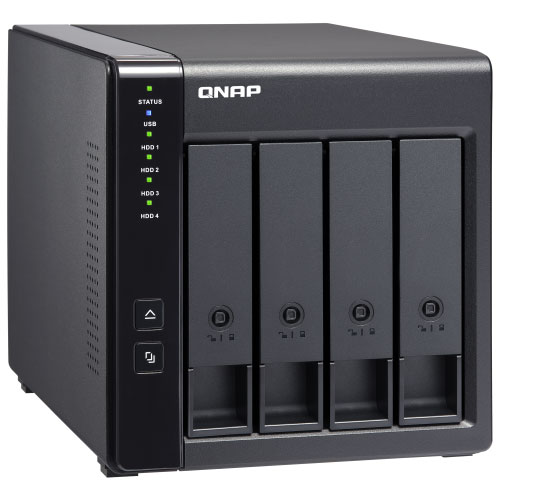This white paper provides a comprehensive overview of enterprise SSDs, exploring their key features, benefits, and usage in demanding data center environments, with a specific focus on the value proposition for Small and Medium-sized Enterprises (SMEs). We delve into the technical aspects that differentiate enterprise SSDs from their consumer counterparts, focusing on endurance, performance, reliability, and data integrity. Additionally, we discuss various form factors, interfaces, emerging technologies, and the crucial role of enterprise SSDs in driving business success for organizations of all sizes.
Why you Need Enterprise SSDs: A Deep Dive
Abstract: This white paper provides a comprehensive overview of enterprise SSDs, exploring their key features, benefits, and usage in demanding data center environments, with a specific focus on the value proposition for Small and Medium-sized Enterprises (SMEs). We delve into the technical aspects that differentiate enterprise SSDs from their consumer counterparts, focusing on endurance, performance, reliability, and data integrity. Additionally, we discuss various form factors, interfaces, emerging technologies, and the crucial role of enterprise SSDs in driving business success for organizations of all sizes.
Introduction
Solid-state drives (SSDs) have revolutionized data storage, offering significant performance advantages over traditional hard disk drives (HDDs). While consumer SSDs cater to everyday computing needs, enterprise SSDs are engineered to meet the rigorous demands of mission-critical applications in data centers and cloud environments. These specialized drives prioritize endurance, performance consistency, data integrity, and reliability to ensure uninterrupted operation and optimal performance in demanding workloads. This paper explores the benefits of enterprise SSDs for both large enterprises and SMEs.
Key Features and Benefits of Enterprise SSDs
Enterprise SSDs distinguish themselves from consumer SSDs through several key features:
- Enhanced Endurance: Higher Program/Erase (P/E) cycles and wear-leveling algorithms extend lifespan, crucial for write-intensive workloads. Measured in Drive Writes Per Day (DWPD) or Terabytes Written (TBW).
- Consistent Performance: Maintain consistent performance under sustained workloads, minimizing latency variations and ensuring predictable response times.
- Data Integrity and Reliability: Advanced error correction codes (ECC), data protection mechanisms, and power loss protection safeguard data against corruption and ensure high availability.
- Higher Capacity and Density: Offer higher storage capacities and densities to accommodate growing data demands.
- Advanced Management Features: Include features like SMART monitoring, secure erase, and encryption for easier management and enhanced security.
Technical Aspects of Enterprise SSDs
- NAND Flash Technology: Utilize various NAND flash memory types (SLC, MLC, TLC, QLC, PLC), each with different endurance, performance, and cost characteristics.
- Controllers and Firmware: SSD controllers manage data placement, wear leveling, error correction, and performance optimization. Enterprise controllers prioritize high throughput, low latency, and robust data management.
- Over-Provisioning: Reserved drive capacity for background operations like wear leveling and garbage collection, enhancing performance and endurance.
- Power Loss Protection: Capacitors or other mechanisms ensure data is safely written during power loss, preventing corruption.
How to Use Enterprise SSDs
- Choosing the Right SSD: Consider workload requirements, capacity, endurance, performance, interface (SATA, SAS, NVMe), and form factor (2.5-inch, M.2, U.2, EDSFF).
- Integration and Deployment: Install SSDs in compatible servers or storage systems.
- Configuration and Optimization: Configure for optimal performance and endurance using features like over-provisioning, wear leveling, and caching.
- Monitoring and Maintenance: Regularly monitor using SMART tools and management software. Implement data backup and recovery strategies.
Why Your Business Needs Enterprise SSDs
For Large Enterprises:
- Mission-Critical Applications: Essential for applications requiring high availability, performance, and data integrity.
- Data Centers and Cloud Environments: Optimize performance, density, and power consumption in large-scale deployments.
- High-Performance Computing: Enable faster processing and analysis of large datasets.
For Small and Medium-sized Enterprises (SMEs):
- Boost Application Performance: Significantly improve application loading times and user experience, increasing productivity.
- Enhance Data Center Efficiency (Even for Smaller Deployments): Lower power consumption and smaller footprint can lead to cost savings and better space utilization. Cloud-based solutions often rely on enterprise SSDs, indirectly benefiting SMEs.
- Improve System Reliability and Uptime: Minimize downtime and data loss, which can be particularly disruptive for resource-constrained SMEs.
- Support Business Growth and Scalability: Accommodate increasing data volumes and application demands as the business grows.
- Gain a Competitive Edge: Faster decision-making, improved customer experiences, and quicker time-to-market.
- Reduce Total Cost of Ownership (TCO): Long-term savings through increased performance, reliability, lower power consumption, and reduced maintenance.
- Improve Data Security: Protect sensitive data with advanced security features.
Use Cases for SMEs
- Fast and Responsive Web Servers: Ensure fast loading times for e-commerce and web applications.
- High-Performance Databases: Improve CRM, inventory management, and other database-driven application performance.
- Efficient Virtualization: Support multiple virtual machines without performance degradation.
- Streamlined Content Creation: Accelerate file access, rendering, and editing for creative workflows.
- Rapid Data Backup and Recovery: Minimize downtime with faster backup and recovery processes.
- Improved Collaboration and File Sharing: Enhance file access speeds and collaboration.
- Point-of-Sale (POS) Systems: Ensure smooth and reliable transaction processing.
Emerging Technologies and Future Trends
- NVMe and PCIe: NVMe over PCIe is the dominant interface, delivering exceptional performance.
- Computational Storage: Integrates processing capabilities within the SSD.
- Persistent Memory: Technologies like Intel Optane offer high performance and data persistence.
- QLC and PLC NAND: Increasing density and capacity while managing endurance.
- EDSFF Form Factors: New form factors optimized for density, performance, and serviceability.
Conclusion
Enterprise SSDs are essential for modern IT infrastructure, benefiting both large enterprises and SMEs. By understanding the key features, technical aspects, usage considerations, and specific use cases, organizations can optimize their storage infrastructure, support growth, and gain a competitive advantage in today's data-driven world.
References
- "SSD Endurance and HDD Workloads," Western Digital.
- "Delivering Advanced Performance and Improved Server Utilization with Value SAS SSDs," KIOXIA America, Inc.
- "Benchmarking Enterprise SSDs," Intel Community.
- "Top Considerations for Enterprise SSDs," Western Digital.
- "Introducing the EDSFF E3 Family of Form Factors," KIOXIA America, Inc.
- "NVMe: The future of storage," SNIA.
